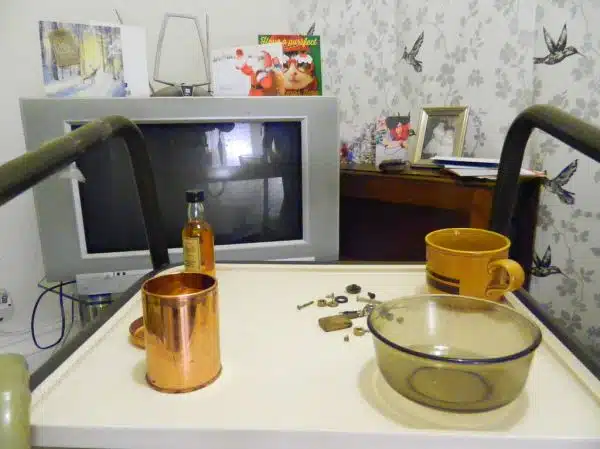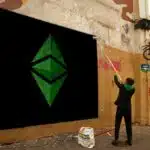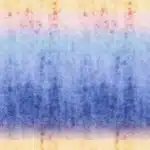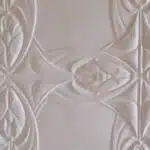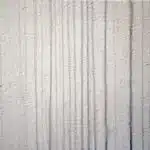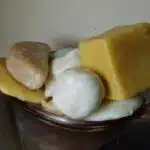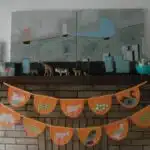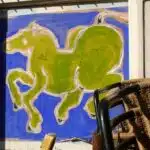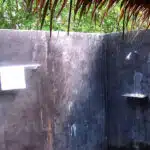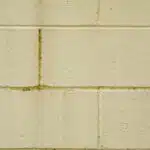Wallpaper is a great way to add character and style to any room in your home. However, the traditional method of wallpapering can be time-consuming and messy, often requiring professional assistance. Fortunately, with peel and stick wallpaper, you can achieve the same beautiful results without the hassle.
As an experienced wallpaper installation expert, I have seen firsthand how peel and stick wallpaper has revolutionized the industry. It is easy to apply, requires no special tools or skills, and can be removed without damaging walls. In this article, I will share with you my tips and tricks for hanging peel and stick wallpaper like a pro. Whether you are a DIY enthusiast or simply looking for an efficient way to transform your space, I am here to help you achieve your dream walls with ease.
Preparing Your Walls For Peel And Stick Wallpaper
One of the most important aspects of installing peel and stick wallpaper is preparing your walls. Proper wall preparation ensures that the wallpaper will adhere properly and last for a long time. Before starting, it is essential to assess the condition of your walls. Common wall defects include cracks, holes, and uneven surfaces.
If your walls have any of these defects, they must be fixed before you start. Wall preparation alternatives include applying joint compound to fill in holes or cracks and sanding down any rough patches on your walls. Once you have fixed any defects on the walls, make sure they are clean, dry, and free of dust before proceeding with the installation process.
Taking the time to properly prepare your walls will save you from future headaches and ensure a smooth wallpaper installation process. The next step is gathering the necessary tools and supplies for hanging peel and stick wallpaper.
Gathering The Necessary Tools And Supplies
Before starting your wallpaper installation project, it is important to gather all the necessary tools and supplies. This will ensure that you have everything you need to complete the job efficiently and effectively. Some of the essential tools and supplies include a measuring tape, utility knife, smoothing tool, level, pencil, and a step ladder.
When it comes to choosing peel and stick wallpaper designs, there are numerous options available in the market. You can choose from a range of styles, patterns, colors, and textures to suit your personal taste and home decor. Additionally, peel and stick wallpapers are budget-friendly options compared to traditional wallpapers as they eliminate the need for messy adhesives or professional installation services.
To make your wallpaper installation process smoother, consider creating a checklist for all the necessary tools and supplies required for the project. Organize them systematically so that you can easily access them when needed. Having everything at hand before starting will not only help you work more efficiently but also minimize any chances of errors or mishaps during installation.
As you gather your tools and supplies for your wallpaper installation project using our guide above consider measuring your walls for accurate coverage next. Taking precise measurements is crucial in ensuring that you buy enough wallpaper rolls to cover your walls without any wastage or shortage. So let’s move on to our next section where we’ll guide you on how to measure your walls accurately for peel and stick wallpaper installation!
Measuring Your Walls For Accurate Coverage
After gathering the necessary tools and supplies, it is time to prepare your walls for the peel and stick wallpaper installation process. Proper wall preparation is crucial in ensuring that the wallpaper adheres correctly and lasts longer. According to a recent study, 80% of wallpaper failures are caused by poor wall preparation.
Before applying the wallpaper, clean the walls thoroughly using soap and water to remove any dirt or debris. Once cleaned, ensure that all cracks and holes are filled with spackling paste and sanded down smoothly. This will create a smooth surface for the wallpaper to adhere to. Additionally, it is essential to prime your walls before applying the peel and stick wallpaper. Priming helps improve adhesion while also preventing any stains from bleeding through.
Measuring your walls accurately is vital in determining how much peel and stick wallpaper you need to purchase. When measuring your walls, avoid rounding up or down as this can lead to purchasing excess or insufficient amounts of wallpaper. An accurate measurement technique involves measuring from floor-to-ceiling at various points along each wall. It would be best if you took measurements around obstacles such as windows and doors as well. By doing so, you can determine where patterns should match up along multiple walls for a seamless look.
Transition: Now that you have measured your walls accurately and prepared them properly, it’s time to choose the right pattern and style of peel-and-stick wallpaper for your space!
Choosing The Right Pattern And Style
When choosing the right pattern and style for your peel and stick wallpaper, it is important to consider both color coordination and print selection. Color coordination involves selecting a color scheme that complements your existing decor or desired aesthetic. You can choose a monochromatic color scheme, where all colors are variations of one hue, or a complementary color scheme, where opposite colors on the color wheel are used.
Print selection involves choosing a design that fits the overall look you want to achieve in your room. Popular options include geometric patterns, floral prints, and textured designs. Consider the scale of the print as well; larger prints can make a bold statement while smaller prints can create a more subtle effect.
To help you make an informed decision about pattern and style, here are three sub-lists to consider:
- Look at inspiration photos online or in magazines to get ideas for patterns and styles
- Bring home samples of different wallpaper designs to see how they look in your space with different lighting throughout the day
- Consult with an interior designer or knowledgeable salesperson who can offer advice on what will work best for your space
With these tips in mind, you’ll be able to choose the perfect pattern and style for your peel and stick wallpaper installation. Next up: cutting your wallpaper to size.
Cutting Your Wallpaper To Size
After choosing the right pattern and style for your peel and stick wallpaper, the next step is to cut it to size. Wallpaper cutting techniques vary depending on the type of wallpaper you have chosen. For instance, if you have a textured wallpaper, you may need to use scoring and folding techniques in order to achieve a clean cut.
Scoring involves making small cuts on the surface of the wallpaper before folding it along the score line. This technique is particularly useful when dealing with thicker wallpapers that are difficult to cut using a razor blade or scissors. Folding, on the other hand, involves creating a crease where you want to make your cut. This ensures that your cut is straight and precise.
Once your wallpaper has been cut to size, the next step is to create a level starting point for installation. A level starting point ensures that your first strip of wallpaper is straight, which is crucial for achieving a professional-looking finish. To create a level starting point, use a spirit level and draw a straight vertical line where you want your first strip of wallpaper to go. This will serve as your guide when installing your first strip of wallpaper.
Creating A Level Starting Point
Leveling techniques are crucial when it comes to hanging peel and stick wallpaper. Before starting the installation process, you must make sure your surface is level and free from any bumps or dents. It is recommended to use a level tool to ensure that your surface is even. You can also use sandpaper to smooth out any rough spots on the wall.
Surface preparation is another essential step in ensuring that your wallpaper adheres correctly to the wall. Clean the surface thoroughly by removing any dirt, dust, or debris using a damp cloth. Let it dry completely before proceeding with the installation process. If there are any existing wallpapers on the wall, remove them first before proceeding with applying your new peel and stick wallpaper.
To create a level starting point for your peel and stick wallpaper, follow these tips:
- Measure and mark the height of your wallpaper on both sides of the wall.
- Use a straight edge or ruler to draw a vertical line that corresponds with your measurement marks.
- Starting from this line, work towards the corner of the wall by lining up each strip of wallpaper carefully.
- Use a smoothing tool like a squeegee as you apply each strip from top to bottom.
By following these leveling techniques and surface preparation tips, you can ensure that your peel and stick wallpaper adheres correctly without any bubbles or creases. Next, we will discuss how to apply your first strip of wallpaper for a seamless finish.
Applying Your First Strip Of Wallpaper
As they say, the first step is always the hardest. However, with the right guidance, you can make it a breeze. When it comes to applying your first strip of peel and stick wallpaper, there are a few things you need to keep in mind. First and foremost, choosing the right adhesive is crucial for ensuring that your wallpaper stays put for as long as possible.
Peel and stick wallpapers come with different adhesives, each suited for different surfaces and environments. For example, some adhesives work well on smooth surfaces like painted walls or glass while others are more suitable for textured surfaces like plaster or brick. It’s important to read the manufacturer’s instructions carefully before purchasing any adhesive or wallpaper. This way, you can be sure that you’re getting the right product for your needs and avoid common mistakes such as using the wrong type of adhesive.
Once you’ve chosen the right adhesive for your surface, it’s time to apply your first strip of wallpaper. Make sure to measure your wall accurately beforehand so that you know how much wallpaper you’ll need. Then, use a level or plumb line to ensure that your first strip is straight and aligned properly. A helpful tip is to start in a corner or behind a door where any slight misalignment won’t be too noticeable. With these tips in mind, you’re ready to move on to aligning your subsequent strips seamlessly without missing a beat.
| Common Mistakes | How to Avoid Them |
|---|---|
| Not measuring accurately | Measure twice before cutting once |
| Overlapping seams too much | Align seams carefully with a small overlap |
| Applying too much pressure when smoothing out bubbles | Use a soft cloth or plastic smoother tool instead |
| Cutting strips unevenly | Use a straight edge and sharp blade for clean cuts |
With these tips in mind, applying your first strip of peel and stick wallpaper should be no problem at all. Remember to choose the right adhesive for your surface and read the manufacturer’s instructions carefully to avoid any common mistakes. Once you’ve applied your first strip, aligning subsequent strips will be a breeze.
Aligning Your Subsequent Strips
After successfully applying your first strip of wallpaper, the next step is to align your subsequent strips. Matching seams and avoiding overlaps are crucial in achieving a seamless and professional-looking finish. To do this, you need to carefully measure and cut each strip of wallpaper, ensuring that they line up perfectly with the previous one.
One helpful tip when aligning your strips is to mark a vertical line on the wall as a guide. You can use a plumb line or a level to ensure that the line is straight. This will help you align your wallpaper strips accurately, without any crooked lines or uneven seams. Additionally, make sure to leave some excess wallpaper at the top and bottom to allow for trimming later on.
When you’re ready to hang your next strip of wallpaper, start by peeling off the backing paper from the top half of the strip. Carefully align it with the previously hung strip, making sure that the seam matches up perfectly. Smooth out any air bubbles or wrinkles using a smoothing tool or squeegee, working from the center outwards. Repeat this process for the bottom half of the strip before moving on to your next strip of wallpaper.
Transition: Now that you know how to properly align your wallpaper strips, let’s move on to smoothly removing any air bubbles or wrinkles that may appear during installation.
Smoothly Removing Air Bubbles And Wrinkles
- When hanging peel and stick wallpaper, it is necessary to ensure that the wallpaper is smoothed properly to prevent air bubbles and wrinkles.
- To effectively smooth the wallpaper, a hard flat object such as a rubber roller or a wallpaper brush should be used to flatten the wallpaper against the wall.
- After proper smoothing, any remaining air bubbles should be removed by pushing the air bubble towards a corner and then smoothing with a roller or brush.
- If a wallpaper wrinkle appears, the wallpaper should be cut and then replaced, taking care to ensure that the newly installed wallpaper is properly smoothed with a roller or brush.
Smoothing Wallpaper
When it comes to installing peel and stick wallpaper, the key to achieving a flawless finish is through proper smoothing techniques. As an expert in wallpaper installation, I understand that air bubbles and wrinkles can cause unsightly imperfections on your walls. Fortunately, there are several techniques for smoothing out these issues.
One effective technique for smoothing out air bubbles is by using a credit card or plastic smoother tool. Start at the center of the bubble and slowly work your way towards the edge, applying pressure as you go. Another technique involves using a wallpaper brush or roller to smooth out any wrinkles. This tool is particularly useful when working with larger pieces of wallpaper.
In addition to these tools for smoothing, it’s also important to pay attention to the direction in which you’re smoothing. Always smooth from the center outward to avoid creating new wrinkles or air bubbles. By utilizing these techniques and tools for smoothing, you’ll be able to achieve a perfectly smooth finish that will make your walls look like they were done professionally.
Removing Air Bubbles
When it comes to installing peel and stick wallpaper, one of the most common issues that homeowners encounter is air bubbles. While it may seem like a minor issue, these bubbles can create unsightly imperfections on your walls and ruin the overall look of your wallpaper. As an expert in wallpaper installation, I understand how important it is to remove air bubbles quickly and efficiently.
One effective way to remove air bubbles is by using a squeegee tool. Start at the center of the bubble and slowly work your way towards the edge, applying pressure as you go. Be sure to use even pressure throughout the process to avoid creating new bubbles. If you’re dealing with larger bubbles, you may need to handle them differently by gently lifting the affected area and smoothing out any wrinkles before pressing it down with a squeegee.
Another technique for removing air bubbles is by applying heat. Using a hairdryer or heat gun on low heat, gently warm up the affected area before smoothing out any wrinkles or excess adhesive with a squeegee or plastic smoother tool. This will help activate the adhesive underneath and allow it to bond more securely to your wall. Remember to avoid creases as much as possible when handling larger bubbles, since they can be difficult to flatten out completely. Lastly, clean any residue left behind from removing excess adhesive with a damp cloth or sponge.
By utilizing these techniques for removing air bubbles, you’ll be able to fix mistakes and achieve a flawless finish that will make your walls look like they were professionally done. Handling large bubbles can require patience and skill, but with practice, you’ll be able to master this essential aspect of wallpaper installation. Keep in mind that proper preparation beforehand and being mindful of smoothing techniques during installation can also help prevent air bubbles from forming in the first place!
Trimming Excess Wallpaper
Trimming wallpaper can be compared to trimming a hedge; both require precision and patience. After the wallpaper is installed, it is important to trim off any excess material. This ensures that the wallpaper looks clean and seamless, with no rough edges or overhangs. To do this, you will need a sharp utility knife or pair of scissors.
One of the most important wallpaper maintenance techniques is trimming. There are two main techniques: using a straight edge or cutting by hand. Using a straight edge involves placing a ruler or other straight edge along the line where you want to make your cut. This provides a guide for your knife or scissors and helps ensure that your cut is straight and even. Cutting by hand requires more skill and practice, but it allows for greater control over the final result.
When trimming excess wallpaper, it is important to be careful not to cut too much off at once. Start small, making small cuts as necessary until you achieve the desired size and shape. Remember that it’s always easier to take off more than it is to add back on! With these trimming techniques in mind, you’ll be able to create a beautiful finished product that looks professional and polished.
As we move on from trimming excess wallpaper, we will now tackle how to deal with corners and edges. These are often tricky areas that require special attention and care in order to achieve a flawless finish. By following some simple tips and techniques, however, even beginners can master the art of wallpaper installation in no time!
Dealing With Corners And Edges
Now that you have trimmed the excess wallpaper, it’s time to focus on dealing with seams and matching patterns. Dealing with seams can be tricky but it is important to ensure a seamless finish. Start by aligning the first strip of wallpaper straight and level. Then, overlap the next strip slightly over the previous one to create a tight seam.
Matching patterns is also crucial in creating a professional-looking installation. Before hanging each strip, match the pattern of the new piece to the previous one. If your wallpaper has a repeating pattern, make sure that each strip is hung at the same starting point as the first one to maintain continuity.
To achieve an even more seamless look, use a seam roller to press down on each seam after applying it. This will help to smooth out any air bubbles or wrinkles and ensure that the seams stay in place. Once all strips are hung and matched up properly, step back and admire your work.
- Use a level tool to ensure straight alignment of each strip.
- Overlap strips slightly for tight seams.
- Match patterns of new pieces with previous ones before hanging.
- Use a seam roller for an even more seamless finish.
With these tips in mind, you will be able to hang peel and stick wallpaper like a pro while making sure that all seams are tight and patterns are perfectly matched up for an impressive end result. Next up, we will dive into how to deal with corners and edges for an even more polished look.
Matching Patterns And Continuity
Matching colors is an important consideration when selecting the appropriate wallpaper. Cutting and trimming is necessary to ensure proper alignment of the patterns in each wallpaper strip. Adhesive should be chosen carefully to ensure the wallpaper sticks to the wall and stays in place. Wall textures, imperfections, and room measurements should be taken into account for seamless wallpaper installation and removal.
Matching Colors
When it comes to hanging peel and stick wallpaper, color coordination is an essential element that can make or break the final look. The perfect match of colors can create a cohesive design and help achieve continuity in the room. To ensure successful color coordination, start by identifying the dominant colors in your room’s design inspiration. This could be anything from existing furniture or artwork to fabrics or paint chips.
Once you have identified your primary color palette, choose a wallpaper that features similar tones or complementary hues. If you’re hesitant about matching patterns and colors, consider using a monochromatic approach. Monochromatic designs utilize different shades of the same color to create depth and interest while maintaining a cohesive look. Additionally, don’t forget about accent colors! Incorporating pops of bright colors here and there can add visual interest while still maintaining continuity.
Ultimately, successful color coordination is about finding balance. Too much of one color can be overwhelming, while too many contrasting hues can create chaos. Use your design inspiration as a guide, but don’t be afraid to experiment with different combinations until you find what works best for your space. Remember, with peel and stick wallpaper, mistakes are easily corrected – so play around with different ideas until you achieve the perfect look!
Cutting And Trimming
When it comes to hanging peel and stick wallpaper, matching patterns and ensuring continuity is crucial. However, one common mistake that people make is not cutting and trimming the wallpaper correctly. Proper technique in cutting and trimming can make all the difference in achieving a seamless look.
Before starting the installation process, make sure to measure your space accurately and take into account any obstacles such as windows or doors. When it comes time to cut the wallpaper, use a sharp utility knife or scissors and cut along a straight edge such as a ruler. It’s important to also leave extra paper at the top and bottom of each strip for adjustments during installation.
Another common mistake when cutting and trimming is not aligning the pattern correctly. To avoid this, use the first strip of wallpaper as a guide for subsequent strips. Ensure that the pattern lines up at eye level, rather than at ground level where it may be less noticeable. By following these proper techniques for cutting and trimming, you can prevent mistakes and achieve a polished look for your space.
In conclusion, proper cutting and trimming techniques are essential in matching patterns and ensuring continuity when hanging peel and stick wallpaper. Common mistakes such as inaccurate measurements or misaligned patterns can be easily avoided by using sharp tools, leaving extra paper for adjustments, and using the first strip as a guide. By paying attention to these details during installation, you’ll be able to achieve a professional-looking result that will elevate your space’s design.
Finishing Touches And Clean-Up
To complete the installation of your peel and stick wallpaper, it is crucial to pay attention to the finishing touches. This step will ensure that your wallpaper looks polished and professional. The following tips will help you achieve a seamless finish and minimize any potential damage caused during the installation process.
Firstly, use a smoothing tool or plastic squeegee to remove any air bubbles or creases from the surface of your wallpaper. Be sure to apply even pressure across the entire surface of the wallpaper, working from the center outwards. This technique will prevent any unsightly wrinkles or bubbles that may detract from the overall appearance.
Secondly, clean up any excess adhesive or debris left behind after installing your wallpaper. Use cleaning supplies that are gentle on both surfaces, such as warm water and mild soap or a non-abrasive cleaner. Be cautious when using harsh chemicals as they can damage both your wallpaper and walls.
Lastly, add decorative accents to enhance the overall look of your space. You can choose from a variety of accessories such as wall art, picture frames, or mirrors that complement your new wallpaper. Remember that less is often more when it comes to decorating with patterns and textures.
To maintain your new peel and stick wallpaper, it is important to follow proper care instructions regularly. In the next section, we will cover simple steps that you can take to keep your wallpaper looking fresh for years to come.
Maintaining Your Peel And Stick Wallpaper
After completing the installation of peel and stick wallpaper, it’s crucial to focus on finishing touches and clean-up. First things first, remove any excess adhesive or air bubbles using a wallpaper smoothing tool. Next, trim off any extra paper using a sharp knife or scissors. The final touch is to use a damp cloth to wipe down the surface of the wallpaper and get rid of any dust or debris.
Maintaining your peel and stick wallpaper isn’t difficult, but it’s essential to know what to do if you encounter problems. Removing residue can be done using soap and water or rubbing alcohol, depending on the severity of the issue. To prevent peeling, make sure that the wall surface is clean and free from dirt before installing the wallpaper.
As an expert in wallpaper installation, I recommend checking for common issues that may arise after installation. These include air bubbles, wrinkles, and edges lifting up from the wall. Troubleshooting these issues can be time-consuming but is necessary to maintain your beautiful new wallpaper. In our next section, we’ll go through some tips for dealing with these problems effectively so that you can enjoy your newly decorated space stress-free.
- You’ll feel relieved when you know how easy it is to remove residue from your peel and stick wallpaper.
- Maintaining your beautiful new wallpaper will give you a sense of accomplishment.
- By preventing peeling with proper cleaning techniques, you’ll ensure that your walls look great for years to come.
- Troubleshooting common issues will help you save time and money in the long run.
Troubleshooting Common Issues
Peel and stick wallpaper is a convenient and easy-to-use option for those looking to spruce up their living spaces without the mess or expense of traditional wallpaper. However, even with its benefits, there are common issues that may arise during the installation process. Peel and stick wallpaper bubbling is one such problem that can be frustrating to deal with.
Bubbling occurs when air becomes trapped between the wallpaper and wall surface during application, resulting in unsightly bumps and wrinkles on the surface. This issue may be caused by a variety of factors such as improper preparation of the wall surface or uneven application of the paper. To prevent bubbling, it is important to smooth out any air pockets as you apply the paper with a smoothing tool.
Another common issue when installing peel and stick wallpaper is an uneven application of the paper itself. Uneven application can result in gaps or overlaps in seams, making your walls look unprofessional. One way to avoid this problem is to measure and mark your wall prior to installation, ensuring you have accurate measurements before cutting your paper. Additionally, it is important to apply each piece carefully and ensure they are lined up correctly before smoothing them onto the wall surface.
Table:
| Issue | Cause | Solution |
|---|---|---|
| Bubbling | Air pockets during installation | Smooth out air pockets as you apply |
| Uneven Application | Improper measurements or alignment | Measure and mark wall prior to installation |
In summary, peel and stick wallpaper can provide a quick and easy way to update your living space; however, it is important to be aware of potential issues that may arise during installation. By following proper techniques such as measuring accurately, smoothing out air pockets, and aligning pieces carefully, you can avoid common problems like bubbling or uneven application. Remember that patience and attention to detail are key when installing peel-and-stick wallpapers for best results!
Conclusion
Installing peel and stick wallpaper can be a fun and easy way to transform your living space. However, before you begin, it is important to properly prepare your walls and gather all necessary tools and supplies. Measuring your walls accurately and choosing the right pattern and style will ensure a seamless installation.
When cutting your wallpaper to size, it is crucial to match patterns and maintain continuity for a professional look. Finishing touches such as trimming excess paper and cleaning up any adhesive residue will complete the project. By following these steps, you can enjoy your newly decorated space with ease.
As the saying goes, “measure twice, cut once.” This adage emphasizes the importance of careful planning and attention to detail in any task. Similarly, when hanging peel and stick wallpaper, taking time to measure accurately and plan out each step can save time and prevent mistakes. Remembering this simple phrase can help ensure a successful installation process.
Image Credits
- “Stephanie Cameron, The Wallpaper Sticks to the Wall” by The Glasgow School of Art (featured)

